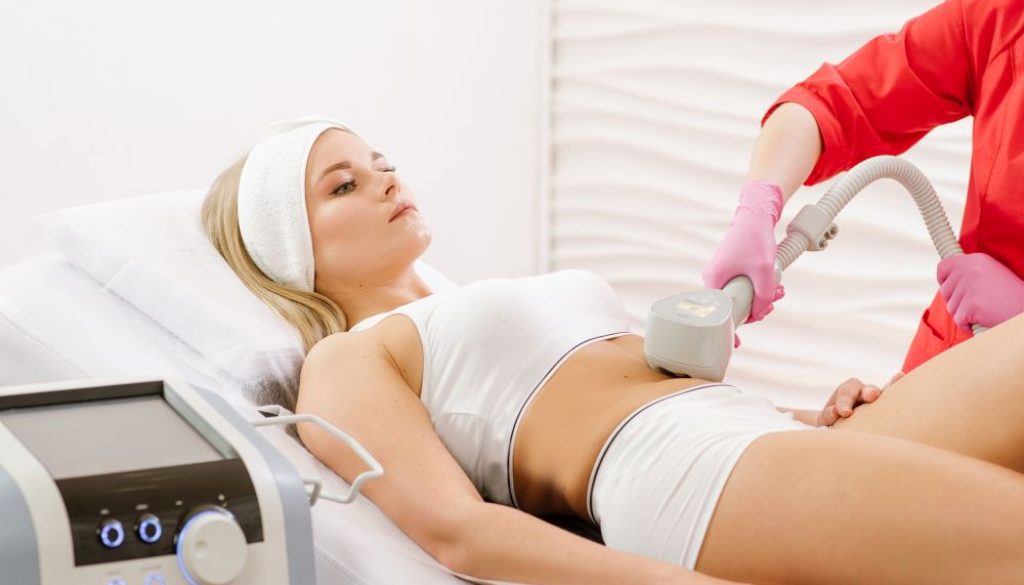Laser liposuction, a modern twist on traditional liposuction, has garnered increasing popularity due to its minimally invasive nature and effective results. This guide delves into everything you need to know about Laser Liposuction Dubai, from the procedure and its benefits to recovery and aftercare.
What is Laser Liposuction?
Laser liposuction, also known as laser-assisted liposuction (LAL), is a cosmetic procedure that uses laser energy to target and break down fat cells. Unlike traditional liposuction, which involves suctioning out fat, laser liposuction liquefies the fat first. The liquid fat is then either suctioned out or naturally absorbed by the body.
How Does It Work?
- Preparation: Before the procedure, the area to be treated is marked, and local anesthesia is administered to ensure comfort.
- Laser Application: A thin cannula (tube) equipped with a laser fiber is inserted through small incisions in the skin. The laser emits energy that heats and melts the fat cells.
- Fat Removal: Once the fat is liquefied, it is either removed through suction or allowed to be absorbed and naturally expelled by the body.
- Healing: The small incisions used in the procedure are typically closed with minimal stitches, and recovery begins.
Benefits of Laser Liposuction
- Minimally Invasive: The use of a laser reduces the need for large incisions, resulting in less trauma to the surrounding tissues and a shorter recovery time.
- Precise Fat Removal: The laser's precision allows for targeted fat removal, making it ideal for small to medium areas.
- Skin Tightening: The laser energy stimulates collagen production, which can result in tighter, smoother skin in the treated area.
- Reduced Downtime: Many patients experience less bruising and swelling compared to traditional liposuction, leading to a quicker return to daily activities.
What Areas Can Be Treated?
Laser liposuction can be used to target various areas of the body, including:
- Abdomen
- Thighs
- Hips
- Arms
- Back
- Chin
- Knees
Risks and Considerations
While laser liposuction is generally safe, it is essential to consider potential risks, including:
- Infection: As with any surgical procedure, there is a risk of infection at the incision sites.
- Scarring: Although minimal, there is a risk of scarring from the incisions.
- Skin Irregularities: Uneven fat removal or skin tightening can lead to irregularities in the skin's appearance.
- Recovery Time: While shorter than traditional liposuction, some bruising, swelling, and discomfort are normal during the recovery period.
Aftercare and Recovery
Post-procedure care is crucial for optimal results:
- Wear Compression Garments: These help reduce swelling and support the treated areas as they heal.
- Follow a Healthy Lifestyle: Maintaining a balanced diet and regular exercise can help sustain the results of the procedure.
- Avoid Strenuous Activities: It is advisable to avoid heavy exercise or strenuous activities for a few weeks post-procedure.
- Follow-Up Appointments: Regular check-ups with your surgeon will ensure that the healing process is on track and that you are satisfied with the results.
Choosing the Right Clinic
Selecting a qualified and experienced clinic is key to achieving the best results. Look for:
- Accreditation: Ensure the clinic is accredited and follows strict safety standards.
- Experienced Surgeons: Choose a surgeon with extensive experience in laser liposuction.
- Positive Reviews: Check patient reviews and testimonials to gauge the clinic's reputation and success rate.
Conclusion
Laser liposuction offers a modern, minimally invasive alternative to traditional fat removal methods. With its precision, skin-tightening benefits, and reduced recovery time, it provides an attractive option for those looking to contour specific areas of their body. By understanding the procedure, its benefits, and the necessary aftercare, you can make an informed decision and achieve the results you desire.





Comments